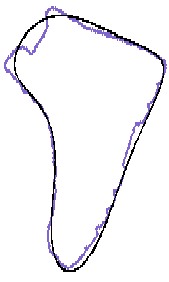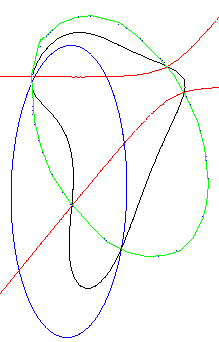

Three problems at the heart of object shape representation, recognition, and alignment for comparison purposes, are: a small-number-of-parameters mathematical model that is of low computational cost from shape data; a low-computation method for computing the position of a shape with respect to a stored version of the shape in some other position; and geometric invariants which capture shape but are independent of object position and thus permit comparing two objects, that are in different positions, to check on whether they have the same shape. With this capability, it is practical to search large image databases for shapes of interest, automatically recognize and represent shapes in images for purposes of image compression, track moving shapes, compare boundaries of objects measured at different times to see whether a change has taken place, and, more generally, do the recognition, representation, and alignment of shapes that is central to many applications in image processing.


4th degree fit on a hiking boot and its 3 aligned conics decomposition.
We are using a shape representation based on algebraic curves. From this determine a complete set of geometric invariants and a complete set of geometric parameters for single-computation estimation of object position. This is the first complete set of geometric invariants that has been found for implicit polynomials of degree higher that 3. These geometric invariants contain all the information in the implicit polynomial representation, and hence the data, for position independent shape recognition. The geometric parameters for single-computation position estimation are the first set found of parameters that contain all the useful information in an implicit polynomial for single-computation position estimation. Hence, these parameters permit the most accurate single-computation (i.e., not iterative) position independent shape recognition or shape alignment. The single-computation is important because it permits the computational speed necessary for large search problems. The speed and accuracy achievable with these new parameters should be greater than with any methods presently available, and the geometric representation provides an important new approach to studying and understanding implicit polynomial representations.
Last updated: June 3, 1998
Back to research topics.